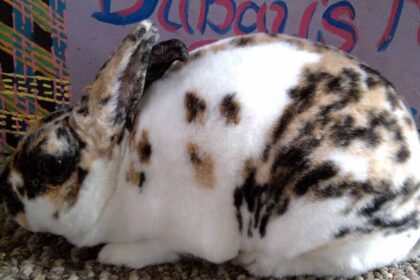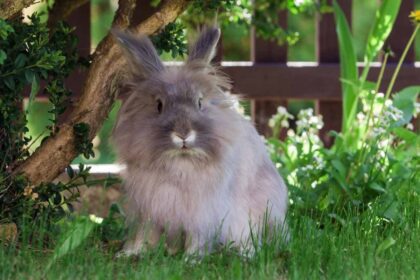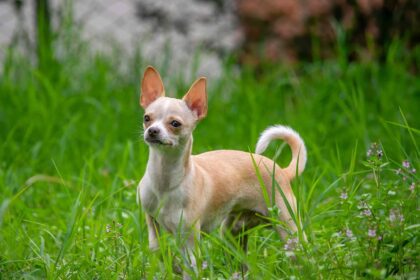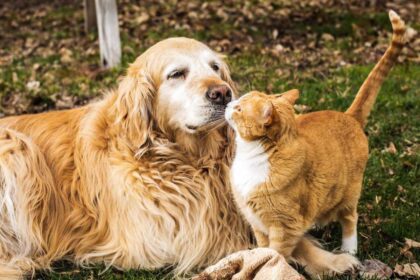Rabbits, those adorable bundles of fluff with twitchy noses and a penchant for hopping. But when are these furry friends actually up and about? Contrary to popular belief, rabbits are not nocturnal animals – meaning they don’t exclusively roam at night. The answer lies in a fascinating term you might not have encountered yet crepuscular.
Twilight or Crepuscular Animals
Crepuscular animals are most active during twilight hours, those periods of low light just after sunrise and before sunset. Studies suggest that around 80% of rabbit activity occurs during these twilight phases. This strategic timing offers several advantages:
Predatory Ability
Predators like foxes and owls are less active during twilight, making it a safer time for rabbits to forage and explore.
Temperature Regulation
The cooler twilight temperatures help rabbits conserve energy, especially since they don’t possess sweat glands for efficient cooling.
Ideal Eating
Many plants rabbits feed on have higher moisture content in the mornings due to dew, making them more palatable during twilight.
Adaptable Advantage
When internal clocks and external cues collide. Here’s where things get interesting. Research by the University of California, Davis, sheds light on the adaptability of rabbit activity patterns.
The study found that while rabbits have an endogenous (internal) preference for nocturnal activity, external factors can significantly influence their behavior.
Light Cycles
In controlled environments with consistent light-dark cycles, rabbits often adjusted their activity to the light schedule, becoming more diurnal (daytime active) when food was readily available during the light period.
Noise Levels
Interestingly, external noise during the day could also push rabbits towards nocturnal activity patterns. This suggests they might prioritize avoiding daytime disturbances over adhering to their internal clock.
Beyond the Twilight of Rabbits
Rabbit activity isn’t confined solely to twilight. They do experience periods of sleep and rest throughout the day and night. However, the bulk of their foraging, grooming, and social interactions happen during those precious twilight hours.
Unveiling the Rabbit Biology
The reasons behind this crepuscular preference are rooted in rabbit biology. Their retinas contain a higher concentration of rods than cones, making them better adapted to seeing in low light conditions.
Additionally, their digestive systems are optimized for processing plant matter slowly, which aligns well with extended grazing periods during twilight hours when temperatures are cooler and dew-laden plants offer the most nutritional value.
Considerations for Captive Care
Mimicking the Wild for a Happy Bunny. Understanding rabbit activity patterns is crucial for proper pet care. Mimicking the natural crepuscular cycle as much as possible can help ensure your rabbit’s well-being. Here are some tips:
Feeding Schedule
Offer the majority of food during the morning and evening, mimicking their natural foraging times. Consider using puzzle feeders or scattering food around their enclosure to encourage foraging behavior.
Playtime
Schedule playtime and exercise sessions for twilight hours when your rabbit will be most energetic. Tunnels, climbing structures, and chew toys can provide enrichment and help expend their energy.
Quiet Time
Provide a calm and quiet space during the day for undisturbed naps. This could be a covered hide box filled with soft hay or a designated sleeping area in their enclosure.
Living in Harmony with a Crepuscular Companion
By understanding their crepuscular nature and the adaptability they possess, we can ensure these fascinating creatures thrive, whether in the wild or in our homes. Remember, rabbits are individuals, and their activity levels can vary. If you notice significant changes in your rabbit’s sleep-wake cycle, consult a veterinarian to rule out any underlying health issues.
With a little planning and environmental enrichment, you can create a happy and healthy home for your furry crepuscular friend.
Beyond the Textbook
A Look at the Social Lives of Crepuscular Critters. While the focus often lies on individual activity patterns, a rabbit’s social life also plays a role in their crepuscularity. Many rabbit species are social creatures, living in communal groups called warrens. These warrens provide safety in numbers, with individuals taking turns foraging and keeping watch for predators during twilight hours.
This cooperative behavior allows the entire group to maximize feeding opportunities while minimizing exposure to dangers.
Rabbit’s World
A Tapestry of Twilight Activity. Understanding rabbit activity patterns goes beyond simply knowing they’re most active at dawn and dusk. It’s a fascinating interplay between internal biological rhythms, external environmental cues, and the social dynamics of their world.
By delving deeper into the science behind crepuscularity, we gain a greater appreciation for the complex lives these adorable creatures lead.
Future of Research
Unanswered Questions and Emerging Insights. The study of rabbit activity patterns is an ongoing exploration. Future research areas could explore:
- The impact of seasonal changes on light cycles and how rabbits adapt their activity patterns.
- The influence of social hierarchies within warrens on individual foraging and resting times.
- Whether there’s a genetic component influencing the degree of crepuscularity in different rabbit species.
By continuing to unravel the mysteries of rabbit activity patterns, we can not only improve the care of pet rabbits but also gain valuable insights into the fascinating world of crepuscular animals.
So, the next time you see a rabbit hopping around at dawn or dusk, remember – it’s not just random activity; it’s a testament to the unique and well-adapted life of a crepuscular creature.
Bonus Tip
Embrace the Twilight! Since rabbits are most active during twilight, consider setting up a safe outdoor enclosure where they can enjoy some pre-dawn or post-dusk playtime under your supervision. This supervised twilight adventure can provide much-needed enrichment and mimic the natural foraging experience.
Remember, prioritize safety by ensuring the enclosure is predator-proof and offers proper ventilation.
Ask Question About Are Rabbits Nocturnal Animals? FAQs
Can I change my rabbit’s activity pattern?
Rabbits can adapt to some degree, but their crepuscular preference is rooted in biology. Mimicking natural twilight cycles with feeding schedules and playtime is more beneficial than forcing a complete shift.
What if my rabbit seems more active at night?
Several factors can influence this. Loud daytime noises might push them towards nocturnal activity. Consult your veterinarian to rule out any health concerns and consider adjusting their environment for a quieter daytime experience.
Are there any rabbit breeds known for being more diurnal?
There isn’t a definitive answer. Individual personalities can play a role. However, some breeds, like Dutch rabbits, might be slightly more active during the day compared to others.
Conclusion
By understanding their crepuscular nature and the adaptability they possess, we can ensure these fascinating creatures thrive, whether in the wild or in our homes. Remember, rabbits are individuals, and their activity levels can vary. If you notice significant changes in your rabbit’s sleep-wake cycle, consult a veterinarian to rule out any underlying health issues.
With a little planning and environmental enrichment, you can create a happy and healthy home for your furry crepuscular friend.













